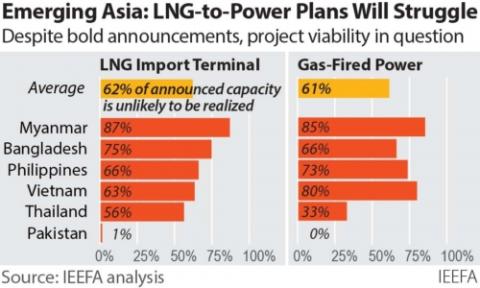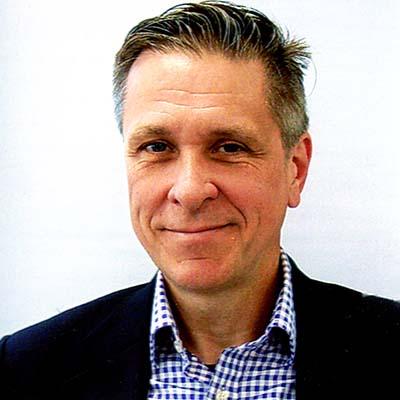Norway’s carbon capture and storage projects augur geological risks in global aspirations to bury carbon dioxide

Unexpected subsurface challenges at Norway’s flagship projects, Sleipner and Snøhvit, show CCS planners and regulators face underground unknowns that may spur financial and environmental risks.
June 14 (IEEFA Asia): Unforeseen variances encountered in the operations of two Norwegian gas projects that store carbon dioxide (CO2) under the seabed call into question the long-term viability of carbon capture and storage (CCS), according to a new report from the Institute for Energy Economics and Financial Analysis (IEEFA).
Grant Hauber, IEEFA’s Strategic Energy Finance Advisor and author of the report, says the Sleipner and Snøhvit subsea fields may have been globally cited as success stories of how to store the CO2 by-product of gas production; however, due to the unpredictability of the subsurface conditions, the pair cannot be used as definitive models for the future of CCS.
Hauber’s literature review of technical studies and academic papers from the 1990s to the 2020s demonstrates that even with the most advanced data, science, and monitoring, subsurface unknowns can arise at any point. The findings raise onerous implications for the scores of CCS projects planned globally, with field operators and the governments that regulate them needing to expect the unexpected, make detailed contingency plans, and ensure funding is at the ready to address materialized risks.
“Every project site has unique geology,” he says. “Subsurface conditions which exist at a given point on the Earth are specific to that place; even then, any information obtained about that place is only a snapshot in time. The Earth moves and strata can change.”
Storage conditions at Snøhvit began deviating dramatically from design plans only about 18 months into CO2 injections, necessitating major interventions and investments. In the case of Sleipner, CO2 moved into an area previously unidentified by engineers despite extensive study of the subsurface geology.
“While the oil and gas industry is used to dealing with uncertainty in exploration and production, the risks multiply when trying to place something like CO2 back in the ground,” Hauber says.
More than 200 CCS and carbon capture, utilization and storage (CCUS) proposals are under consideration worldwide. Their proponents have held up Sleipner and Snøhvit as proof that large-scale offshore CO2 storage is a viable means to help meet net-zero carbon emissions mandates.
Hauber notes that proposed CCS projects seek to deposit CO2 underground at rates exceeding 10 times those of Sleipner and Snøhvit. As his report indicates, there is no way the Norwegian pair can be proxies for projects of that scale.
Rather than being models for CCS, the two fields raise a cautionary tale about the technical and financial viability of the concept in the long run, he says.
“Their subsurface performance deviations cast doubt on whether the world has sufficient technical prowess, strength of regulatory oversight, and unwavering multi-decade commitment of capital and resources needed to keep CO2 sequestered below the sea, as intended, permanently.”
Earth’s complexities upend storage ambitions
IEEFA has released studies assessing the overall costs, benefits and challenges of CCS projects, including prospects for CCS in the power sector, a global compendium of CSS projects, and CCUS in Southeast Asian markets.
This new report focuses on subsurface geology. Sleipner and Snøhvit, run by Norwegian state-owned energy company Equinor ASA, have benefited from some of the most advanced subsurface assessment methods available, Hauber notes.
“The two fields were among the most thoroughly studied pieces of earth on the planet. Despite the wealth of information in hand, scientists could not predict the geological challenges. Even the experts admit they never know for certain how CO2 will react with the subsurface until the injections begin.”
As Equinor has reported, the pair have sequestered their intended annual CO2 deposit volumes, since 1996 for Sleipner and since 2008 for Snøhvit. Between them, about 22 million tonnes of CO2 have accumulated hundreds of meters below the ocean floor; however, totals do not indicate the challenges of getting CO2 into the ground and keeping it there.
At Sleipner, over the course of only three years of operations, stored CO2 quickly migrated upward 220m, in the process exposing the presence of a previously unknown geological stratum in 1999. CO2 migration rates to this new stratum accelerated over time. These deposits have proven challenging to model. Fortunately, this zone appears covered by solid caprock, keeping the CO2 trapped for now. However, as CO2 injections continue, scientists do not know how far that containment extends, raising questions for the future.
At Snøhvit, pressure in the CO2 deposit area rose rapidly to alarming levels in 2010, just a year and a half after injections began, because the targeted storage rock was not accepting CO2 at anywhere near the rate design studies indicated. Storage estimates dropped from 18 years to only six months, triggering an emergency well intervention to find a temporary solution.
Snovhit’s unexpected development forced Equinor to prospect for new CO2 storage areas, and in 2016, it invested in another injection site as part of a US$225 million capital expenditure campaign to improve production and storage operations.
“Snøhvit highlights the need for CCS projects to have continuous monitoring, extensive backup plans and the money to implement them. Sleipner proves that injected CO2 can start behaving in unexpected ways despite what appears to have been years of nominal performance,” says Hauber.
Financial, magnitude and regulatory implications
A key driver of both projects was the avoidance of the Norwegian Carbon Tax, introduced in 1991.
“It was a difference between paying more than US$41 per tonne of CO2 (tCO2) emitted versus a sequestering cost of about US$17/tCO2. If Equinor wanted to monetize the methane in its gas deposits, it had to remove and store the CO2 mixed in with it,” says Hauber.
“Unfortunately, in countries that intend to merely subsidize CO2 removal, that market-based driver is missing. CCS then becomes dependent upon perpetual subsidy – potentially continuing long after the storage sites are shuttered – exposing the environment to whims of budgetary processes.”
Sleipner’s and Snøhvit’s CO2 injection rates, at 0.85mtpa-1.0mtpa and 0.7mtpa respectively, are smaller than many proposed CCS projects worldwide. It remains in doubt whether offshore storage projects can be reliably scaled up.
Chevron in Australia has been trying unsuccessfully since 2019 to get its massive 3.5mtpa-4mtpa Gorgon CCS project to meet promised targets of 80% CO2 capture for storage, instead venting higher rates of CO2 to the atmosphere than intended.
Malaysia’s Petronas is investing in CCS for its new Kasawari field to process gas containing 40% CO2 on an offshore platform that, at 3.3mtpa, will be four to five times the size of Sleipner’s. The RM4.5 billion (US$1 billion) CCS component of gas field development is neither compensated by subsidies nor avoids carbon tax; it is simply part of a national commitment to reach net-zero greenhouse gas emissions.
In Europe, the United Kingdom has proposed four CCS “hubs” that would gather CO2 from multiple sources and pipe it offshore to depleting North Sea gas fields. The Norwegian government is steaming ahead with plans to import CO2 from around the continent and dispose of it in the country’s territorial waters. These larger-scale projects are being justified based on the experience of Sleipner and Snøhvit.
High-emitting industries in the United States, centered around the Houston Ship Channel, have been seeking Federal support for a US$100 billion CO2 gathering, compression and offshore disposal network for the Gulf of Mexico. Discussion around this project and others similar indicate newly established emitters could be attracted to join the network and actually increase the need for CO2 disposal.
In the regulatory realm, the need to assure CO2 stays in the ground permanently means CCS projects create potentially indefinite contingent liabilities.
The few national CCS regulations that exist recognize a need to ensure storage integrity by requiring operators to post bonding that covers storage site monitoring and remedial actions, but they vary widely on how long leakage risk is perceived to persist.
In the United States, that liability period can extend up to 50 years, while in Australia it may run to only 15. Most jurisdictions allow regulators discretion to waive the bonding period.
“With the unknowns of long-term subsurface CO2 storage, regulators could inadvertently allow material risks to be transferred to the taxpayer,” Hauber says.
“Subsurface CO2 storage is an amalgamation of probabilities and risks, some of which can be identified, others remaining unknown until troubles materialize. These risks – and the costs that accompany them – are not being made part of public discourse by either industry or government.”
Read the report: Norway’s Sleipner and Snøhvit CCS: Industry models or cautionary tales? | The presentation slide deck is available here
Report contact:
Grant Hauber ([email protected])
Media contact:
Alex Yu ([email protected]) Ph: +852 9614 1051
About the author:
Grant Hauber provides strategic advice on energy and financial markets to IEEFA’s Asia-Pacific team. With an emphasis on the region’s emerging markets, he provides insights into project finance, multilateral development institutions, and implementing the energy transition.
About IEEFA:
The Institute for Energy Economics and Financial Analysis (IEEFA) examines issues related to energy markets, trends and policies. The Institute’s mission is to accelerate the transition to a diverse, sustainable and profitable energy economy. (www.ieefa.org)














